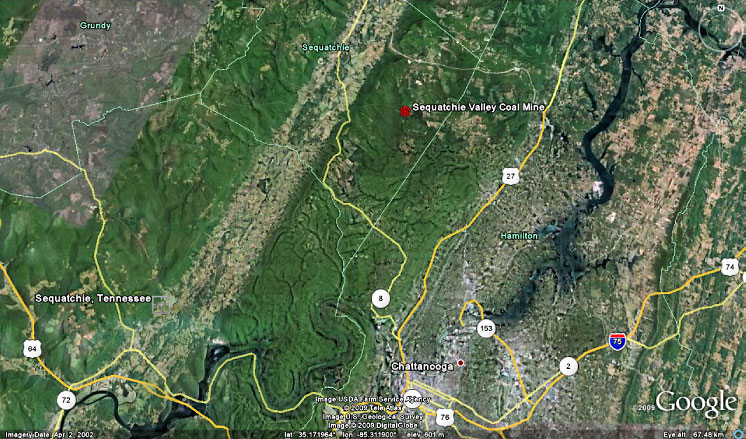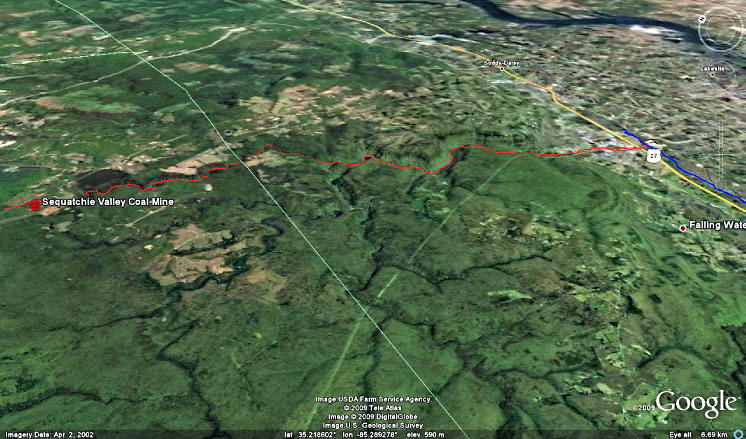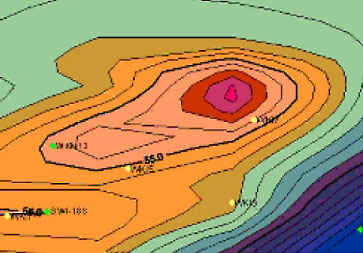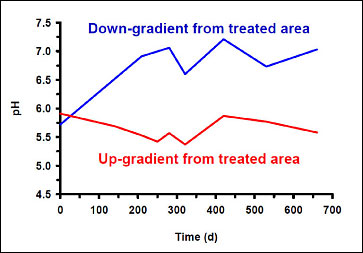Case Study as part of a Web-based
Technical and Regulatory Guidance
Sequatchie Valley Coal Mine
Sequatchie County, Tennessee
1. Site Information
1.1 Contacts
Western Research Institute
Contact: Jeff Morris
Telephone: 307-721-2422
E-mail: [email protected]
1.2 Name, Location,
and Description
The Sequatchie Valley Coal Mine site is next to the TN(4) site (USEPA
2000), located approximately 16.6 miles northwest of Chattanooga (latitude
35.30136N, longitude 85.31557W) in Sequatchie County, Tennessee (Figure 1-1).

Figure 1-1. Surroundings of the Sequatchie Valley Coal Mine.
(Source: GoogleEarth 2009 with a satellite image of April 2002. Elaboration: ITRC.)
The site, owned by Kennecott Energy Company, is a reclaimed surface bituminous coal mine that was mined between 1970s and 1990s. Sequatchie Valley Coal has reclaimed approximately 1,400 acres, including 350 acres of abandoned mine land. The owner implemented different technologies from backfilling technology and chemical treatment to anoxic lime drain. Now, the site is covered with natural vegetation; however, due to rain and runoff, the site still produces acid mine drainage (AMD).
Water continues seeping through backfilled material, causing AMD problems in low-lying areas, where seeps drain into small basins and wetlands. AMD gets into the natural rivers, affecting them, and groundwater and soil throughout are also affected. In Figure 1-2 the river path nearest the site is indicated in red. The area has many rivers which also transport AMD; all join into the Appalachian basin.

Figure 1-2. AMD discharge flow from Sequatchie Valley Coal Mine.
(Source: GoogleEarth 2009 with a satellite image of April 2002. Elaboration: ITRC.)
2. Remedial Action and Technologies
Western Research Institute (WRI) has developed a unique biological source
treatment technique that is distinctive from treatment techniques which focus
on AMD effluents. The technique uses readily available, inexpensive sources
of inocula (e.g., wastewater effluent and solids, lagoon sediments) and substrates
(e.g., returned milk, other dairy byproducts) to raise pH and prevent AMD
generation at the source. Microorganisms feed on the substrates and neutralize
acidity by consuming acid-generating protons and producing alkaline bicarbonate
as by-products of their natural metabolism. At the same time, microorganisms
form a biofilm over the AMD source material, such as pyrite, shielding the
material from oxygen and preventing oxidation of the pyrite.
3. Performance
To gauge the performance of the technology, an electromagnetic survey was
used to measure the subsurface conductivity as deep as 120 m, pinpoint sources
of AMD (see Figure 3-1), and construct a cohesive map of the overall plume
without the need to drill monitoring wells.
The contaminants of concern to probe the performance of the technology were acidity, iron, and manganese. Figure 3-2 shows the positive results derived from the application of biological source treatment at the site. The pH of groundwater downgradient from injection wells has been steadily increasing while remaining in the neutral range.

Figure 3-1. Cohesive map using electromagnetic survey. Red indicates a strong presence of AMD sources. (WRI 2007)

Figure 3-2. pH behavior as a function of time down- and upgradient from treated area. (WRI 2007)
4. Costs
The capital and operating and maintenance costs were not estimated because
the project is research in progress.
5. Regulatory Challenges
The implementation of the technology encountered regulatory barriers due
to permits needed for subsurface injections and to expand treated area. Despite
that fact, there are open lines of communication with state regulatory agencies,
and the existing data that support the technique are being shared when possible.
6. Stakeholder Challenges
No stakeholder challenges were encountered.
7. Other Challenges and Lessons
Learned
Treatment is raising pH and decreasing conductivity in treated area. Adjacent
untreated areas were still contributing low pH drainage to surface water
sites; therefore, the treatment zone is being expanded to treat or intercept
low pH water from these sites prior to surface discharge.
8. References
USEPA (U.S. Environmental Protection Agency).
2000. Coal Remining Best
Management Practices Guidance Manual.
WRI (Western Research Institute). 2007. “Biological Source Treatment of Acid Mine Drainage: Rapid Assessment, Cost-Effective Application, Permanent Solution.”
